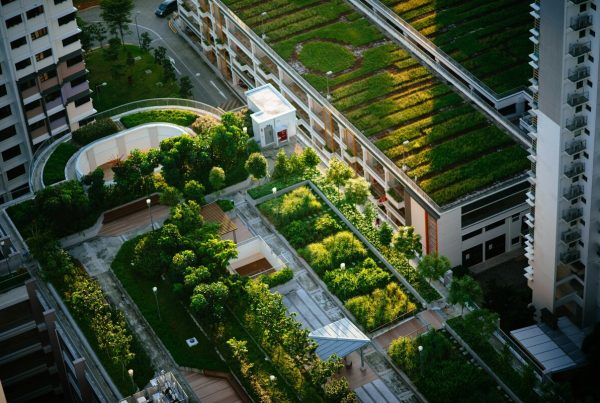These days there’s a big focus on buildings that work just like nature.
It’s the next logical step to sustainability—not simply being concerned about locally-sourced materials or non-toxic ingredients or carbon footprint, but making sure, too, that buildings work in accordance with nature’s various principles.

The Watercube in Beijing is inspired by soap bubbles. Not exactly biomimicry in the purest sense, but the inspiration from nature is there.(Image from Arup.com)
For many years now, scientists and engineers have been drawing on nature for inspiration. From iridescent butterfly wings to sticky plant burrs, from hydro-efficient sharkskin and humpback whales to a kingfisher’s aerodynamic beak. What they’ve found out is that when it comes to fine-tuning things to perfection, Mother Nature is way ahead of us.
This fine-tuning is called evolution. Plants and animals are the way they are now because their ancestors had slowly and painstakingly evolved for billions of years through the process of natural selection.
It’s still an ongoing process. But as it is, evolution can already be mined for its many genius principles. Velcro, for instance, was inspired by the plant burrs; counterfeit-proof banknotes, from the butterfly wings; faster swimsuits with less drag, from the sharkskin; and more efficient wind turbines from the bumps on a humpback whale.
Tapping into this wealth of genius has resulted in a field called biomimicry. Essentially, it’s copying or imitating life and nature.
And if biomimicry can address life’s various problems on the small-scale in a more convenient and more efficient way, imagine the implications it’ll have in a bigger and grander system such as a building.
Biomimicry in Architecture
We’ve long advocated for buildings that are in harmony with the city and nature around it. If we have the notion of the city as a living, breathing organism to which we are all inevitably connected, then we’d be more careful with what we erect there.
Since buildings are essentially one big functioning system, there are many places and instances in which the small-scale principles of biomimicry can be applied.
Consider the strong adhesives used by mussels for their shells, which led scientists to formulate a soy-based adhesive that’s completely free from formaldehyde. Dirt- and bacteria repellent paint on the other hand was inspired by the “teeth” in the scales of a shark’s skin (called denticles) as well as by the self-cleaning petals of the lotus flower. Meanwhile, the black area in a birdwing butterfly’s wings have informed scientists to create solar cells with better light absorption. Scientist have also looked to spiderwebs which can reflect ultraviolet light which makes them visible to birds so they can avoid flying into them.
So with biomimicry, you get non-toxic adhesives, high-performance paint, and more efficient solar cells, and bird-friendly glass panes. These, along with many other innovations, can be incorporated in a building system. The possibilities are endless, so long as scientists are able to decipher and mimic more of Mother Nature’s genius.
Perhaps the classic example of biomimicry in architecture is the well-ventilated chambers of a termite mound. The enterprising Odontotermes termites have bored vent holes in their mound so air can freely go in, which helps regulate temperatures inside despite extreme heat from the outside. The principle has been applied to Eastgate Centre Building in Zimbabwe.
And while some studies have generally faulted the engineers of that building for basing their design on incorrect biology, at least the inspiration was there.
Other notable buildings that use biomimicry are the Gherkin Tower, patterned after the Venus Flower Basket Sponge and the spherical domes of the Eden Project, inspired by soap bubbles and pollen grains.
So biomimicry operates on both the big and small scale—the building’s overall design plus its many details. Together they add up a greater whole.
Genius of Biome
Last year architectural and engineering firm HOK released a report entitled Genius of Biome, meant to delve into the many principles and strategies used by plants and animals and how they can be applied to the built environment.
The report is free to view and share, because the company believes in its responsibility to inspire other designers and engineers into creating buildings that work with, and not against, nature.
* * *
Biomimicry is still an emerging field. So much more lies to be discovered and take inspiration from. As climate change screws up weather patterns resulting in freak catastrophes such as Typhoon Haiyan and Hurricane Sandy, engineers are realizing that working with nature is the best way forward. And biomimicry has a lot to contribute to that.
Now that China’s president has declared a moratorium on weirdly-shaped buildings, maybe China and the rest of the world can start focusing on buildings that don’t just look good but are also in harmony with nature.











